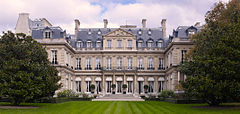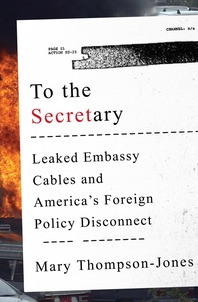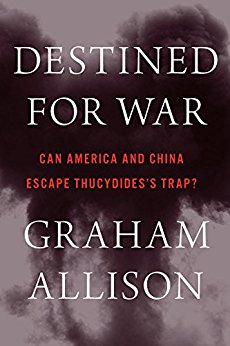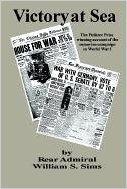Bespoke bespoken here. (Don’t ask. Just think about it.)

Hotel Rothschild: The Ambassador’s Residence Built by a Child Bride With a Story Worthy of An Opera
is one of thirty-three overseas properties in the US Secretary of State’s Register of Culturally Significant Property. These are usually embassies or ambassador’s residences with particular architectural or historical importance. Some of them have quite interesting stories.
I had an opportunity to visit the Hotel Rothschild and meet US Ambassador Pamela Churchill Harriman not long after she arrived at her new post in 1993. I was in Paris to attend EDC l and on a whim I decided to drop in at the embassy and take a look. In those days you could still do things like that. The embassy is lovely, as a mansion built for a princess and owned by a Rothschild should be, but it took the 73-year-old to have the chutzpah to hang her own French masterpieces in the embassy. Frankly, I don’t remember much about the building but I definitely remember her. Finally, note that the Hotel Rothschild, built for a child bride, should not be confused with the Hotel Rothschild in Tel Aviv, which was built for a rich, old baron.

To the Secretary: Leaked Embassy Cables and America’s Foreign Policy Disconnect
by Mary Thompson-Jones, 2016, is another tell all
memoir by a twenty-three year professional American diplomat who focused on the theft and subsequent publication of more than 250,000 State Department cables by WikiLeaks in 2010. Although it was an embarrassment to the US it also revealed a lot about how important cables are. All I could think about while reading the book was how upset I got when Ron Spitzer snuck a look at my submitted orders in a STRATEGICON Diplomacy game back in the 1980s and then had the nerve to run around and share them with the other players in the game (including Steve Cooley, although I’m sure he’d deny it). But, as any diplomat or Dipper will tell you, It’s not the supply center; it’s the principle that counts.

Destined for War: Can America and China Escape Thucydides’s Trap?
by Graham Allison (2017) is a well-reviewed and number one rated book by Amazon.com and yet only four customers have reviewed it. I devoted a fair amount of space to discussing it in an article on Kissinger, Allison and goings-on at Harvard’s Belfer Center that I wrote for TDP or DW. Although controversial, the book still has some interesting insights into what happens when an on-the-way-up power runs into an on-the-way-down power. There’s a lot of good stuff in the case studies devoted to the WWI period.

Democracy
by Condoleezza Rice (2017) is her new book and entered the sales charts at No. 4. It’s a well-written combination of “tales of diplomacy and unrequited love", but this time the femme fatale diplomat’s interest isn’t George W. Bush but the former Libyian strongman Col. Muammar el-Qaddafi. Apparently he was quite taken with my darling black African woman.
Well, that’s what she said. I’ve now read a dozen or so memoirs and books by and about our former female secretaries of state: Albright, Rice and Clinton; and each of them in their own way, has proved fascinating both as a person and as a diplomat-in-chief.

My Journey at the Nuclear Brink
by William J. Perry (2015), former secretary of defense. Perry follows in the footsteps of Robert McNamara, who was secretary of defense for presidents Kennedy and Johnson, by turning from a hawk into a dove. It was the Vietnam War that was the catharsis for McNamara’s change. For Perry it was the threat of nuclear War. Most recently he suggests much of the responsibility for a potential USA vs Russia nuclear war is on the Americans and their actions: the expansion of NATO to the Russian borders, improvements to the US nuclear arsenal and the decision of President George W. Bush to withdraw the United States from the ABM Treaty and to deploy such missiles to Europe. Things have not gotten any better lately and once again the US and Russia seem to be on the verge of a game of Diplomacy or Nuclear War brinkmanship with each other and neither side is inhibited by MAD. How bad are things? Well, perhaps one number says it all, The United States now has 8 of its top national security decision-makers drawn from the ranks of current or past senior military officials.

Secrets of Churchill’s War Rooms
distributed for the Imperial War Museum (2016) tells part of the story of London’s famous tourist attraction, the Churchill War Rooms. Anyone who loves the kind of Britcentric What if
or Alternative history
stories that only the Brits can come up with will enjoy this book. I did. My only regret is that there’s so much more to the story, secret and even ultra-secret, that didn’t get told. By all means read the book and then, if you can, head to London for some on-foot exploration of the original War Rooms, the recently open expanded addition of more rooms (and keep in mind that 70% of the original complex is still off-limits to visitors) and not-so-obvious but intriguing spots like the new Ministry of Defense underground bunker which is nearby and the tunnel that links the War Rooms with Ten Downing Street and runs right under the Knightsbridge parade ground. It seems that while we are still scratching the surface of Cold War history we’re now busy digging below it for new stories about WWII.

Victory at Sea
by William Sowden Sims (original in 1921, paperback in 2002). If you think of the US in WWI you immediately think of Gen. John J. Pershing, the commander of US Army forces in Europe, but you might not think of Vice Admiral William Sims, who commanded US Navy forces in Europe. The fact that Sims won the Pulitzer Prize in 1921 for his memoirs tells you something about the man, as does the fact that he served as president of the Naval War College not once but twice! During the Spanish-American War he served as naval attaché in Paris and St. Petersburg where his diplomatic skills came into play. In fact, I’ve no doubt he’d have made a great Diplomacy player. This is a fun read and another example of the fascinating but not-so-well-known American figures involved in the Great War.
Jean Jules Jusserand Memorial
, Rock Creek Park, Washington, D.C.

I can’t remember if I’ve written anything on this Memorial or not. I know I intended to but just in case it slipped my mind here’s a suggestion. If you’re in Washington, take a copy of one of the books on this list, a picnic lunch with a bottle of good French wine, and a fanny pillow; and make your way to the Rock Creek Park and find this memorial bench and settle in for a good read and picnic. But before you do, look up its story here or here. I think you’ll find it fascinating. Again, the links to WWI, France and diplomacy make it a perfect subject for us.

|
Larry Peery [{Function}] (peery@ix.netcom.com) |
If you wish to e-mail feedback on this article to the author, and clicking
on the envelope above does not work for you, feel free to use the
Dear DP...
mail interface.